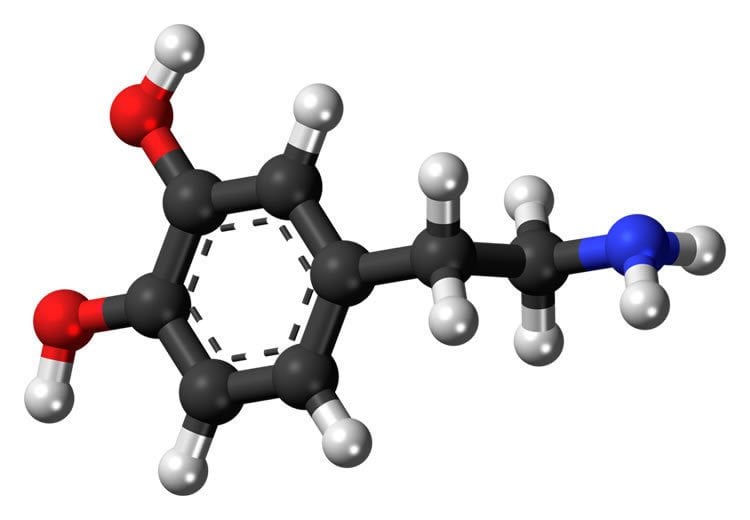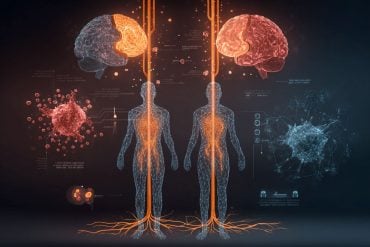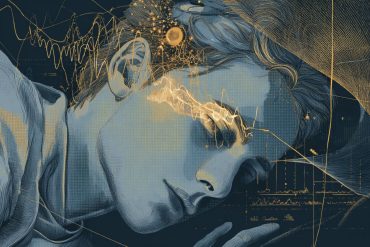Summary: Researchers have identified a significant role dopamine plays in the development of heroin addiction. The study reports dopamine appears to directly cause drug reinforcement and, when dopamine neurons are silenced, mice are less likely to self administer the drug.
Source: eLife.
Scientists have made a major advance in untangling the brain circuits that lead to the powerful addictive effects of heroin, a study in the open-access journal eLife reports.
The discovery could lead to more effective treatments for addiction and a new generation of less addictive painkilling medicines.
Addiction develops when a drug has beneficial outcomes, such as pleasure or reward, which reinforce repeat behaviour – known as drug reinforcement. By understanding the brain processes that contribute to drug reinforcement, scientists hope to better understand and prevent drug addiction.
“It has been repeatedly argued that the initial reinforcing effects of opioids do not involve dopamine, but the question is still hotly debated,” explains author Michaël Loureiro, Postdoctoral Fellow at the University of Geneva, Switzerland. “In this study, we used advanced genetic tools to selectively manipulate and observe distinct groups of nerve cells to revisit this fundamental question.”
First, the team used a genetically coded fluorescent sensor to measure levels of dopamine in the nucleus accumbens of the brain – a primary site involved in reward behaviour. Less than a minute after the mice were given heroin, there was a peak in fluorescence which represented a significant increase in dopamine.
They next recorded the activity of dopamine neurons by measuring activity of calcium. They found that dopamine neurons were activated after repeated heroin infusions, and that this matched the pattern of dopamine release seen in the previous experiment.
Having established a role for dopamine, the scientists set out to map the neural signals it triggers. They used two tracer molecules that move to distinct regions of the brain. By studying their location after heroin treatment, they found that most of the activated dopamine neurons send signals to the ‘medial shell’ region of the nucleus accumbens in the brain.
To prove that increased dopamine directly causes drug reinforcement, the team looked at the effects of silencing dopamine in mice with a well-established heroin addiction and were consistently self-administering the drug using a lever. They found that when they silenced the dopamine neurons, the mice were much less likely to self-administer heroin. Crucially, when they did this early in the addiction phase, the mice were less likely to develop the habit of self-administering heroin. This showed that activation of dopamine neurons in the nucleus accumbens is required for the early positive reinforcing effects of opioid drugs.

Finally, they used mice with genetically manipulated dopamine neurons that are activated by light, which the mice can self-stimulate by pressing a lever, to see whether heroin would replace the positive reinforcement effect of the light. As expected, the mice given heroin and then free access to laser light stimulation were much less likely to press the lever to obtain light stimulation than those which only had access to the light. This confirmed that the reinforcing effects of heroin is operating via dopamine.
“We have confirmed the validity of the dopamine activation hypothesis for opioids,” concludes senior author Christian Lüscher, Professor in Neuroscience at the University of Geneva. “Untangling the circuits underlying opioid reinforcement will not only allow the refinement of addiction treatments, but also lays the foundations for the development of painkilling drugs without addiction liability.”
Funding: Schweizerischer Nationalfonds zur Förderung der Wissenschaftlichen Forschung, European Commission funded this study.
Source: Emily Packer – eLife
Publisher: Organized by NeuroscienceNews.com.
Image Source: NeuroscienceNews.com image is in the public domain.
Original Research: Open access research for “Dopamine neurons projecting to medial shell of the nucleus accumbens drive heroin reinforcement” by Julie Corre, Ruud van Zessen, Michaël Loureiro, Tommaso Patriarchi, Lin Tian, Vincent Pascoli, and Christian Lüscher in eLife. Published October 30 2018.
doi:10.7554/eLife.39945
[cbtabs][cbtab title=”MLA”]eLife”Dopamine Drives Early Addiction to Heroin.” NeuroscienceNews. NeuroscienceNews, 30 October 2018.
<https://neurosciencenews.com/dopamine-heroin-addiction-10122/>.[/cbtab][cbtab title=”APA”]eLife(2018, October 30). Dopamine Drives Early Addiction to Heroin. NeuroscienceNews. Retrieved October 30, 2018 from https://neurosciencenews.com/dopamine-heroin-addiction-10122/[/cbtab][cbtab title=”Chicago”]eLife”Dopamine Drives Early Addiction to Heroin.” https://neurosciencenews.com/dopamine-heroin-addiction-10122/ (accessed October 30, 2018).[/cbtab][/cbtabs]
Abstract
Dopamine neurons projecting to medial shell of the nucleus accumbens drive heroin reinforcement
The dopamine (DA) hypothesis posits the increase of mesolimbic dopamine levels as a defining commonality of addictive drugs, initially causing reinforcement, eventually leading to compulsive consumption. While much experimental evidence from psychostimulants supports this hypothesis, it has been challenged for opioid reinforcement. Here, we monitor genetically encoded DA and calcium indicators as well as cFos in mice to reveal that heroin activates DA neurons located in the medial part of the VTA, preferentially projecting to the medial shell of the nucleus accumbens (NAc). Chemogenetic and optogenetic manipulations of VTA DA or GABA neurons establish a causal link to heroin reinforcement. Inhibition of DA neurons blocked heroin self-administration, while heroin inhibited optogenetic self-stimulation of DA neurons. Likewise, heroin occluded the self-inhibition of VTA GABA neurons. Together, these experiments support a model of disinhibition of a subset of VTA DA neurons in opioid reinforcement.






